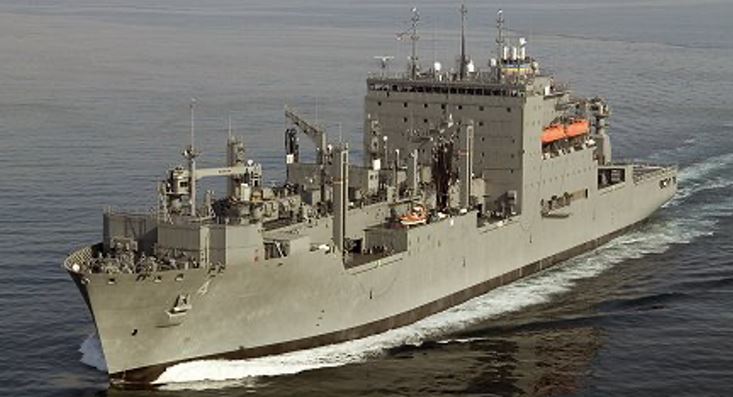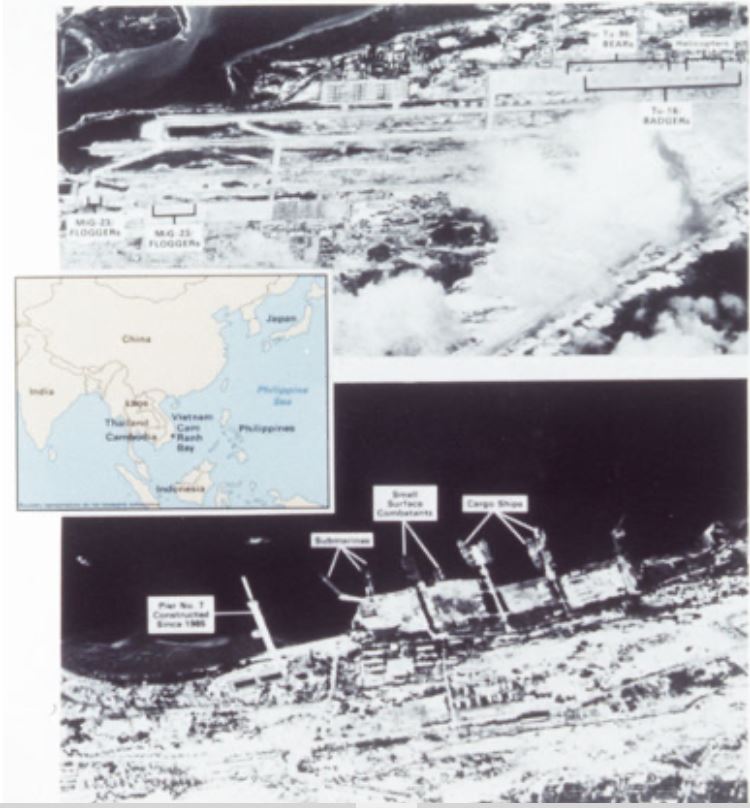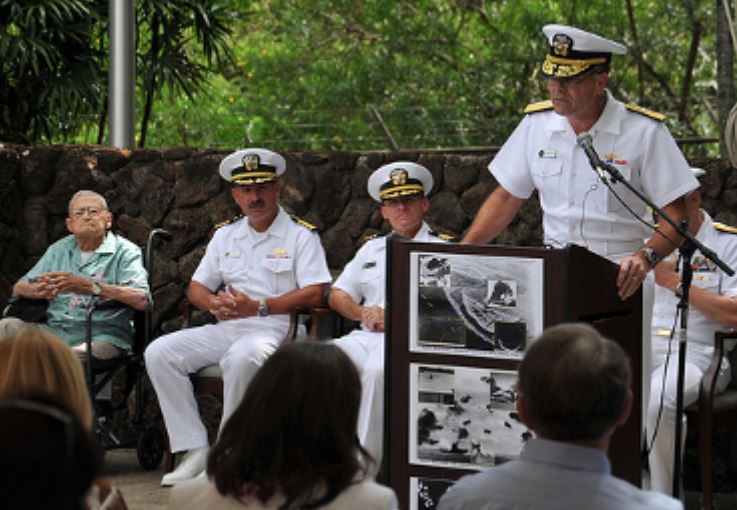Midway and Cam Ranh Bay

(USNS Richard E. Byrd, (TAKE-4) en route Cam Ranh Bay, SRV. Admiral Byrd was an early Naval Aviator and famed Antarctic explorer. Official USN Photo)
I am pondering the past and the future it has wrought from the Great Room at Refuge Farm. I am embarked on a deck project to prolong the life of the farm, not the deck of a ship. Nine years ago on this day I was supposed to be in the Mid-Pacific, on the lovely isle of O’ahu, and celebrating the accomplishments of heroes seventy years in the past.
Of course, there were a lot of us looking West that morning. SECDEF Leon Panetta was in WESTPAC, visiting the former US Naval Station at Cam Ranh Bay, Republic of Vietnam. The white sandy beaches there were the playground of the Rest & Recreation crowd, and there were all sorts of interesting things that went on around what many considered to be SE Asia’s best deep-water port.
The strange marine mammal program? Ask someone who knows why no Viet Cong Combat Swimmer ever made it to shore there alive. Flipper was always our friend. There are a lot of memories abroad in the vast Pacific.
The Secretary stood on the deck of the USNS Richard E. Byrd (T-AKE 4) to ruminate on the historic significance of her presence there in the harbor, which I knew through my career as the largest Soviet naval base outside the Soviet Union, and a significant signals intelligence complex.
It was always irritating to look at images like this during my active duty days:

(High altitude imagery of the Soviet Facility at CRB. Photo DoD).
But things have changed. I was a small cog in the gears that normalized relations with the Vietnamese almost thirty years ago, and I am pleased that American emissaries are spreading out across the Pacific, reinvigorating old and new relationships. There could be one of the Navy’s new littoral combat ships assigned to Singapore, on the strategic Strait of Malacca, and perhaps even a return to Cam Rahn Bay.
The Chinese will have to chew on this one, hard, as they rattle the region with their “string of pearls” sea-control strategy and the astonishing claims to the entirety of the South China Sea. Not to mention a “Belt and Road” scheme to embrace the globe.
It is worth talking about this morning, since my pals were then halfway to China to celebrate the victory that turned the Pacific war toward victory, and cemented a dominant presence in those waters for a half century.
The Administration then had announced plans to change the center of gravity of the Fleet to reflect a 60% presence in the Pacific. That was the famous “pivot” strategy to recognize that the only emerging and resurgent peer fleets- China, Russia and India- are Pacific and Indian Ocean powers. We even changed the name of our military command for the region. Now, PACOM is INDO-PAC.
‘Bout time, though I don’t know that objective reality will permit the new plans to come to fruition. There is the matter of the pesky Iranians, after all, and the loose stack of dominoes in the CENTCOM area of responsibility. I mean, Saudi, Iran, Syria, Palestine and Israel all have their assorted interests and imperatives, and have acted on them recently. They all get a vote on what will happen there, regardless of our grand strategy.
But at the moment, I remember the faces of the Mandarins of the People’s Liberation Army- Navy (PLA-N) and the prospect of a bustling US Navy presence once more in Cam Ranh Bay. It is all back. Asia is embarking on a new arms race. The Japanese have abandoned the old 1% cap on defense funding. The Aussies and Kiwis, with Japan and the Vietnamese, are dealing with a new and implacable threat.
It is a matter of national interest and tradition, then and now. It is just one of the reasons I regret missing that commemoration in Hawaii nearly a decade ago, and the last time to see it with someone who lived the most remarkable experience a naval officer can feel.

(Left to right, Mac, Kimo, Matt and Patrick Driscoll, Deputy Commander of the U.S. Pacific Fleet, addresses an audience of Naval Intelligence Professionals for whom this anniversary is so special. USN Photo Mass Communication Specialist 2nd Class David Kolmel.)
Mac was there at Pearl, seventy years later. There was a press release about his historic return with the family, and that is why I could kick myself for not being able to travel and share the moment with them.
The actual anniversaries of the victory are strewn across the last month or more, when the men of Station HYPO teased out the secret of the Japanese Battle Plan and schemed to come up with the definitive clues that would convince Admiral Nimitz to roll the dice with everything he had.
Joe Rochefort’s band of codebreakers managed to do it, and maximum force applied with maximum intensity at the point of attack enabled the victory.
That and the incredible courage of the aviators of the torpedo squadrons, who lined up one by one to be shot down as they lined up at low altitude to attempt to bring their steel fish to bear. As the Japanese combat air patrol swooped down to help shoot them, the SBD Dauntless dive bombers of Wade McClusky appeared overhead to provide the most memorable five minutes of combat action of the war.
The battle raged between 4-7 June, 1942, and God Bless the memories of the aviators from USS Enterprise (CV-6), USS Hornet (CV-8), and USS Yorktown (CV-5) and the Marine and Air Corps pilots stationed on Midway who made it possible for Secretary Panetta to stand on a US Navy Ship in Cam Ranh Bay, and confront an uncertain future.
Mac told the audience about the challenging process of his team’s intelligence work leading up to the battle. “It took time, and it took talent, and it took research, and it took a lot of effort on the part of a lot of people,” he said in his prepared remarks. He has unbelievable stamina, and this was only one of four major addresses they expect him to make on the Island.
I wish Mac was still among us, and that the famed Willow Restaurant’s doors were open. But today, in these strange times, at least we can remember.
Copyright 2021 Vic Socotra
www.vicsocotra.com
